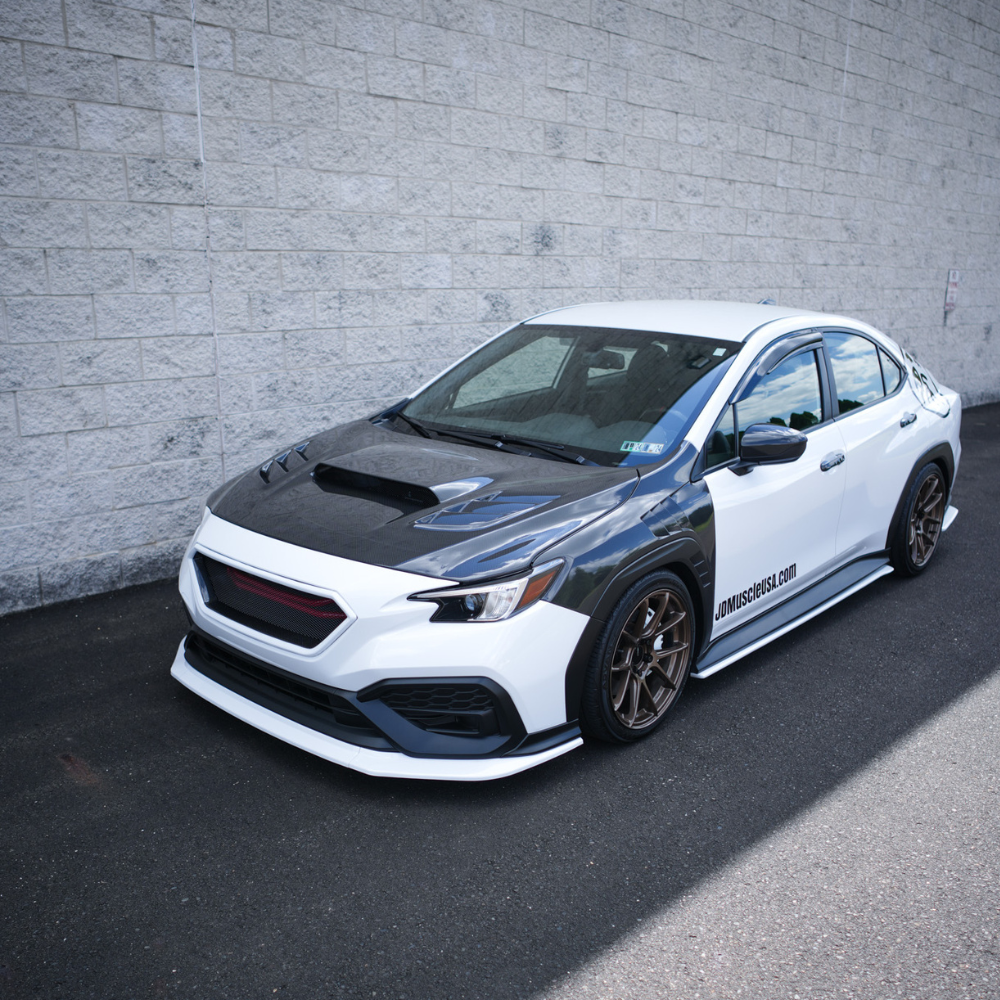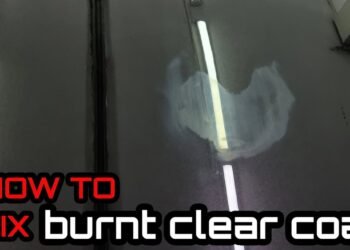You want your car to look sharp and stand out on the road, right? One simple upgrade that can make a big difference is painting your front lip.
Whether you’re aiming for a sleek, seamless look or a bold contrast, a freshly painted front lip instantly boosts your car’s style and presence. But how do you get that perfect finish without spending a fortune or making costly mistakes?
You’ll discover easy, step-by-step tips to paint your front lip like a pro. Keep reading, and you’ll be ready to transform your car’s appearance with confidence and style.

Credit: www.reddit.com
Materials And Tools
Painting a front lip requires the right materials and tools to achieve a smooth and lasting finish. Choosing quality supplies helps the paint stick well and look professional. Proper preparation also plays a key role in the painting process. Below are the main materials and tools needed for painting a front lip.
Choosing The Right Paint
Select paint that matches your car’s color perfectly. Automotive paint is best for durability and appearance. Use urethane or acrylic enamel paint for a strong finish. Primer is important to help the paint bond and prevent peeling. Clear coat protects the paint and adds shine. Avoid cheap or non-automotive paints, as they may crack or fade quickly.
Essential Tools For Painting
You need a spray gun or spray cans designed for automotive use. Sandpaper in various grits smooths the surface before painting. Masking tape and paper protect areas you don’t want to paint. A respirator mask keeps you safe from harmful fumes. Clean microfiber cloths help wipe dust and dirt from the surface. Gloves keep your hands clean and prevent oils from contaminating the paint.
Surface Preparation Supplies
Start with soap and water to remove dirt from the front lip. Use wax and grease remover to eliminate oils and residues. Sand the surface with 400-600 grit sandpaper for better paint adhesion. Use tack cloths to pick up fine dust before painting. Make sure the surface is dry and free of debris before applying primer or paint. Proper preparation ensures the paint lasts longer and looks smooth.
Preparing The Front Lip
Preparing the front lip is a vital step before painting. This ensures the paint sticks well and looks smooth. Proper preparation helps the paint last longer and prevents peeling or cracking. Take time to do this right for the best results.
Cleaning And Degreasing
Start by washing the front lip with soap and water. Remove all dirt, dust, and grime. After washing, use a degreaser to clean off oils and residues. This step is important because grease stops paint from sticking. Wipe the surface with a clean cloth until dry.
Sanding Techniques
Sanding creates a rough surface for the paint to hold on. Use fine-grit sandpaper, around 400 to 600 grit. Sand evenly over the entire lip. Avoid sanding too hard to prevent damage. After sanding, wipe off the dust with a damp cloth and let it dry.
Repairing Imperfections
Inspect the front lip for scratches, chips, or cracks. Fill small holes or deep scratches with plastic filler or putty. Let the filler dry completely before sanding it smooth. This step creates a flat surface and hides flaws. A smooth base is key to a clean paint job.
Priming The Surface
Priming the surface is a key step when painting a front lip. It helps the paint stick better and last longer. A good primer also protects the material from damage and improves the final look. Taking time to prepare and prime the surface makes the painting process smoother and the result more professional.
Selecting The Primer
Choose a primer made for the material of your front lip. Most front lips are plastic or polyurethane. Use a primer designed for plastic parts. This type sticks well and prevents peeling. Avoid primers that are too thick or slow to dry. Read the label to ensure compatibility with your paint type.
Applying Primer Evenly
Clean the front lip well before priming. Remove dirt, grease, and old paint. Spray the primer in thin, even coats. Hold the spray can 6 to 8 inches from the surface. Move in smooth, sweeping motions. Avoid heavy spots or drips. Let each coat dry before applying the next. Two or three coats usually work best.
Drying And Curing Times
Allow the primer to dry fully before painting. Drying time varies by primer brand and weather conditions. Usually, it takes 30 minutes to an hour. For best results, let the primer cure for 24 hours. This makes the surface strong and ready for paint. Rushing this step can cause paint to peel or bubble.
Painting Process
Painting a front lip enhances your car’s look and protects the surface. The painting process requires care and attention to detail. Proper steps ensure a smooth, lasting finish that matches your vehicle’s color perfectly.
Following a methodical approach avoids costly mistakes and uneven paint. Understanding each phase helps you achieve professional results, even as a beginner.
Mixing And Matching Paint
Match the paint color with your car’s original shade. Use the vehicle’s paint code found on the door frame or manual. Mix the paint thoroughly to achieve uniform color and consistency. Stir slowly to avoid bubbles and ensure even pigment distribution. Test the paint on a small area before full application. This step helps confirm the color match and finish type.
Spray Painting Tips
Choose a clean, dust-free area with good ventilation. Shake the spray can or paint gun well before use. Hold the spray tool 6 to 8 inches from the lip surface. Apply thin, even coats to prevent drips and runs. Allow each coat to dry before adding the next layer. Use smooth, steady motions to cover the lip evenly. Finish with a clear coat for shine and protection.
Avoiding Common Painting Mistakes
Do not rush the drying time between coats. Paint applied too thickly causes runs and uneven texture. Avoid painting in humid or windy conditions. Dust and debris can stick to wet paint and ruin the finish. Always clean and sand the lip before painting to remove dirt and rough spots. Skipping prep work leads to poor adhesion and peeling.
Finishing Touches
Finishing touches are crucial to achieve a smooth and durable paint job on your front lip. These steps protect the paint and bring out a glossy, professional look. Taking time with each phase improves the final outcome and ensures long-lasting results.
Applying Clear Coat
Clear coat seals and protects the base paint on the front lip. Use even, light sprays to avoid drips or runs. Multiple thin layers work better than one thick coat. Allow each layer to dry before applying the next. This finish adds shine and guards against scratches and weather.
Buffing And Polishing
Buffing removes minor imperfections and smooths the surface. Use a soft buffing pad with a gentle polishing compound. Work in small sections with circular motions. This step enhances gloss and makes the paint job look flawless. Avoid pressing too hard to prevent damage.
Curing And Drying
Proper curing lets the paint and clear coat harden fully. Leave the front lip in a dust-free area. Avoid touching or exposing it to moisture during this time. The curing period can take several hours to days depending on paint type. This step ensures durability and a firm finish.

Credit: jdmuscleusa.com
Maintenance Tips
Maintaining the paint on your front lip ensures it stays vibrant and protected. Proper care prevents damage and keeps your vehicle looking sharp. Follow these simple tips to extend the life of your painted front lip.
Cleaning Painted Surfaces
Use a soft cloth or sponge to clean the front lip gently. Avoid harsh brushes or abrasive materials that can scratch the paint. Mild soap and water work best for removing dirt and grime. Rinse thoroughly to prevent soap residue. Dry the surface with a clean microfiber towel to avoid water spots.
Touch-up Procedures
Small chips or scratches can be fixed quickly with touch-up paint. Match the paint color exactly for the best results. Clean the damaged area before applying paint to ensure good adhesion. Use a fine brush or paint pen for precision. Allow the paint to dry completely before driving or washing.
Protecting Against Damage
Apply a clear coat or paint sealant to shield the painted surface. This layer helps resist UV rays, dirt, and minor scratches. Avoid parking too close to bushes or curbs that might scratch the front lip. Regularly inspect the paint for signs of wear or damage. Acting early can save costly repairs later.
Troubleshooting
Troubleshooting paint issues on your front lip can save time and money. Small mistakes often happen during painting. Fixing these problems early keeps your car looking great. Understanding common paint flaws helps you handle them quickly and effectively.
Dealing With Paint Runs
Paint runs appear as drips or streaks on the surface. They happen when too much paint is applied at once. Let the paint dry fully before fixing. Sand the run gently with fine-grit sandpaper. Clean the area to remove dust. Reapply thin, even coats of paint to avoid new runs.
Fixing Uneven Coverage
Uneven coverage shows as patchy or blotchy paint spots. It occurs when paint is applied inconsistently. Lightly sand the uneven sections to smooth the surface. Use a spray gun or brush for even application. Apply multiple thin layers, allowing each to dry. Check the lighting to spot missed areas.
Handling Paint Peeling
Paint peeling happens when paint lifts off the front lip surface. It results from poor surface preparation or low-quality paint. Remove all loose paint with a scraper or sandpaper. Clean the area thoroughly to remove dirt and grease. Use a primer designed for plastic or rubber parts. Paint with a product made for automotive use, applying thin coats for durability.

Credit: www.youtube.com
Safety Precautions
Painting a front lip enhances your vehicle’s look but involves working with chemicals and tools. Taking safety precautions protects your health and prevents accidents. Follow basic safety steps to ensure a smooth and safe painting process.
Ventilation And Protective Gear
Work in a well-ventilated area to avoid inhaling fumes. Paint and primers release harmful vapors. Open windows or use fans to keep air flowing.
Wear protective gear like gloves, masks, and safety glasses. Gloves protect your skin from chemicals. Masks prevent breathing in paint particles and fumes. Safety glasses shield your eyes from splashes.
Safe Disposal Of Materials
Dispose of paint waste and used materials carefully. Do not pour leftover paint down drains or on the ground. Use sealed containers for waste and take them to a hazardous waste facility.
Clean brushes and tools with appropriate solvents. Collect the cleaning liquids and dispose of them properly. This helps protect the environment and complies with local laws.
Handling Chemicals Responsibly
Read all labels and instructions before using paint products. Follow recommended usage and storage guidelines strictly. Keep chemicals away from heat sources and children.
Store paint and solvents in original containers with tight lids. Avoid mixing different chemicals, which can cause dangerous reactions. Handle all materials with care to reduce risks.
Frequently Asked Questions
Is It Okay To Put Face Paint On Lips?
You can apply cosmetic-grade, non-toxic face paint on lips if the label allows. Avoid paints with harmful pigments. Use clean tools and test for irritation first. Some colors may stain or dry lips. Lipstick offers a safer, more durable alternative for lip color.
What Is A Front Lip Called?
A front lip is also called a front lip spoiler or front splitter. It enhances aerodynamics and adds style to a vehicle.
What Is The Average Cost To Repaint A Front Bumper?
The average cost to repaint a front bumper ranges from $150 to $400. Pricing depends on paint quality and labor.
Can You Paint An Ez Lip?
Yes, you can paint an EZ lip using proper automotive paint. Clean the surface, apply primer, then paint with matching color for best results.
What Is A Front Lip On A Car?
A front lip is a small aerodynamic part attached to the car’s front bumper. It improves look and airflow.
Conclusion
Painting your front lip adds style and protects your car’s look. Use proper paint designed for automotive parts. Clean the surface well before starting to ensure good results. Take your time with each step to avoid mistakes. A well-painted front lip improves your vehicle’s curb appeal.
Regular care keeps the paint fresh and lasting longer. Enjoy the new, sleek look on your car every day.

















